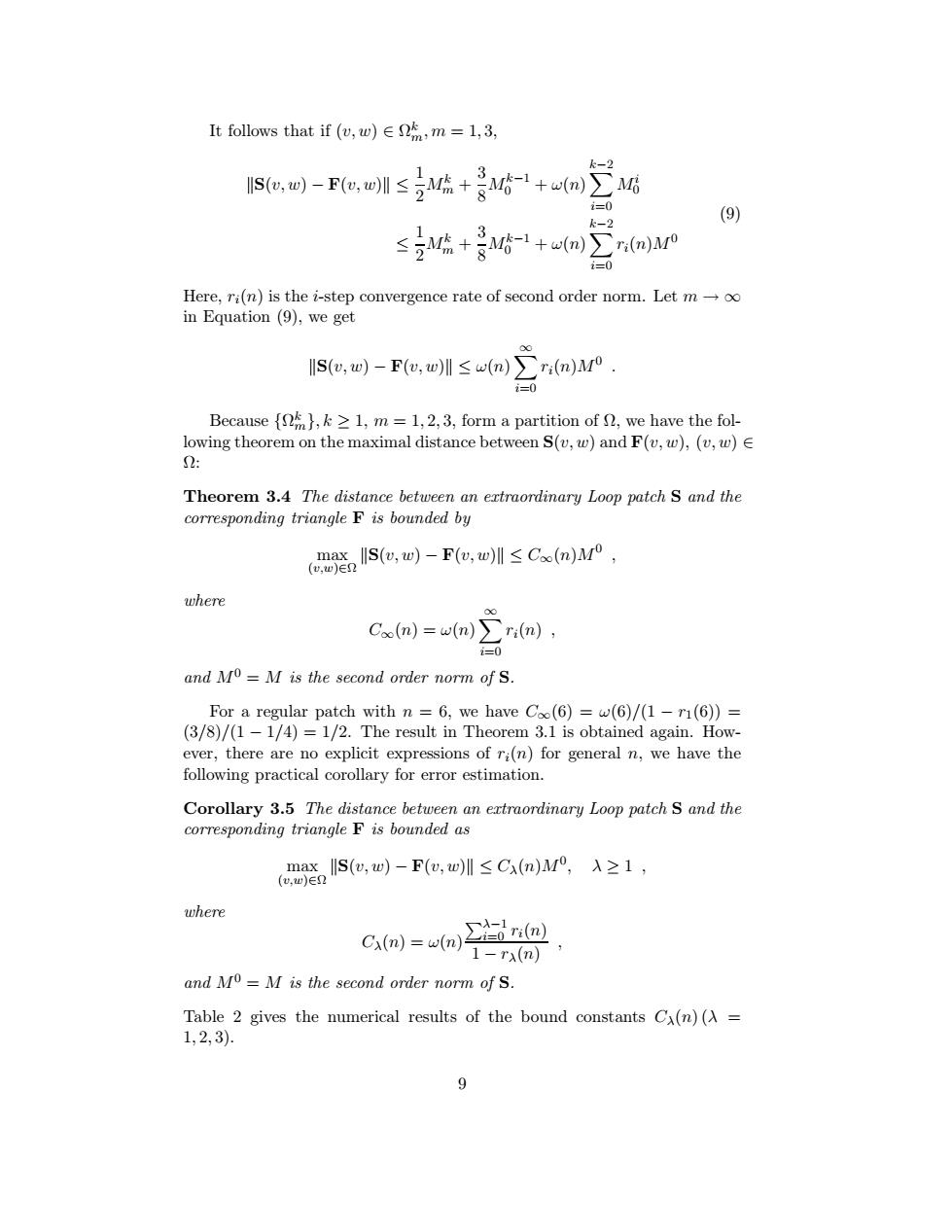正在加载图片...

It follows that if (v.w)m=1.3. 5u-I≤+gg+fm2好 Ise,回)-Ft,ol≤e62nmla 时。 Se,)-F,l≤x(njA ahere ca=a2m。 yr Cm5rgonayepadsad IS(,叫)-F,w训≤C4,A≥1 o=M is the secored order zortn of s. It follows that if (v, w) ∈ Ω k m, m = 1, 3, kS(v, w) − F(v, w)k ≤ 1 2 Mk m + 3 8 Mk−1 0 + ω(n) X k−2 i=0 Mi 0 ≤ 1 2 Mk m + 3 8 Mk−1 0 + ω(n) X k−2 i=0 ri(n)M0 (9) Here, ri(n) is the i-step convergence rate of second order norm. Let m → ∞ in Equation (9), we get kS(v, w) − F(v, w)k ≤ ω(n) X∞ i=0 ri(n)M0 . Because {Ω k m}, k ≥ 1, m = 1, 2, 3, form a partition of Ω, we have the following theorem on the maximal distance between S(v, w) and F(v, w), (v, w) ∈ Ω: Theorem 3.4 The distance between an extraordinary Loop patch S and the corresponding triangle F is bounded by max (v,w)∈Ω kS(v, w) − F(v, w)k ≤ C∞(n)M0 , where C∞(n) = ω(n) X∞ i=0 ri(n) , and M0 = M is the second order norm of S. For a regular patch with n = 6, we have C∞(6) = ω(6)/(1 − r1(6)) = (3/8)/(1 − 1/4) = 1/2. The result in Theorem 3.1 is obtained again. However, there are no explicit expressions of ri(n) for general n, we have the following practical corollary for error estimation. Corollary 3.5 The distance between an extraordinary Loop patch S and the corresponding triangle F is bounded as max (v,w)∈Ω kS(v, w) − F(v, w)k ≤ Cλ(n)M0 , λ ≥ 1 , where Cλ(n) = ω(n) Pλ−1 i=0 ri(n) 1 − rλ(n) , and M0 = M is the second order norm of S. Table 2 gives the numerical results of the bound constants Cλ(n) (λ = 1, 2, 3). 9